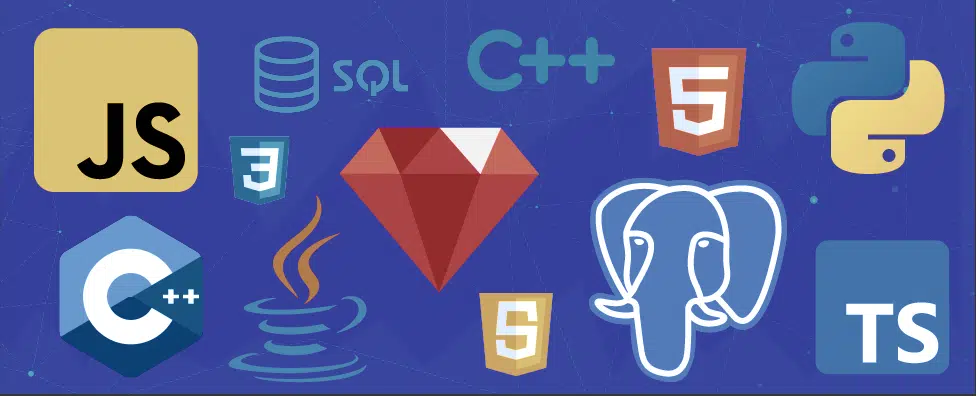Most people often think of JavaScript (JS) as just a programming language; however, JavaScript, as well as JavaScript frameworks, JavaScript code have multiple applications besides web applications. That includes mobile applications, desktop applications, backend development, and embedded systems.
Looking around, you might also discover that a growing number of developers are leveraging JavaScript frameworks to learn new machine learning (ML) applications. JS frameworks, like Node JS, are capable of developing and running various machine learning models and concepts.
Learn more about Introduction to Python for Data Science

Best NodeJS libraries and tools for machine learning
To help you understand better, let’s discuss some of the best NodeJS libraries and tools for machine learning.
1. BrainJS:
BrainJS is a fast-running JavaScript-written library for neural networking and machine learning. Developers can use this library in both NodeJS and the web browser. BrainJS offers various kinds of networks for various tasks. It is fast and easy to use as it performs computations with the help of GPU.
If GPU isn’t available, BrainJS falls back to pure JS and continues computation. It offers numerous implementations on a neural network and encourages developing and building these neural nets on the server side with NodeJS. That is a major reason why a development agency uses this library for the simple execution of their machine learning projects.
Pros:
- BrainJS helps create interesting functionality using fewer code lines and a reliable dataset.
- The library can also operate on client-side JavaScript.
- It’s a great library for quick development of a simple NN (Neural Network) wherein you can reap the benefits of accessing the wide variety of open-source libraries.
Cons:
- There is not much possibility for a softmax layer or other such structures.
- It restricts the developer’s network architecture and only allows simple applications.
Cracking captcha with neural networks is a good example of a machine learning application that uses BrainJS.
TensorflowJS is a hardware-accelerated open-sourced cross-platform to develop and implement deep learning and machine learning models. The library makes it easy for you to utilize flexible APIs for developing models with the help of high-level layer API or low-level JS linear algebra. That is what makes TensorflowJS a popular library for every JavaScript project that is based on ML.
There are an array of guides and tutorials on this library on its official website. It even offers model converters for running the pre-existing Tensorflow models under JavaScript or in the web browser directly. The developers also get the option to convert default Tensorflow models into certain Python models.
Pros:
- TensorflowJS can be implemented on several hardware machines, from computers to cellular devices with complicated setups
- It offers quick updates, frequent new features, releases, and seamless performance
- It has a better computational graph visualization
Cons:
- TensorflowJS does not support Windows OS
- It has no GPU support besides Nvidia
NodeJS: Pitch Prediction is one of the best use cases for TensorflowJS.
3. Synaptic:
Developed by MIT, Synaptic is another popular JavaScript-based library for machine learning. It is known for its pre-manufactured structure and general architecture-free algorithm. This feature makes it convenient for developers to train and build any kind of second or first-order neural net architecture.
Developers can use this library easily if they don’t know comprehensive details about machine learning techniques and neural networks. Synaptic also helps import and export ML models using JSON format. Besides, it comes with a few interesting pre-defined networks such as multi-layer perceptions, Hopfield networks, and LSTMs (long short-term memory networks).
Pros:
- Synaptic can develop recurrent and second-order networks.
- It features pre-defined networks.
- There’s documentation available for layers, networks, neurons, architects, and trainers.
Cons:
- Synaptic isn’t maintained actively anymore.
- It has a slow runtime compared to the other libraries.
Painting a Picture and Solving an XOR are some of the common Synaptic use cases.
4. MLJS:
MLJS is a general-purpose, comprehensive JavaScript machine learning library that makes ML approachable for all target audiences. The library provides access to machine learning models and algorithms in web browsers. However, the developers who want to work with MLJS in the JS environment can add their dependencies.
MLJS offers mission-critical and straightforward utilities and models for unsupervised and supervised issues. It’s an easy-to-use, open-source library that can handle memory management in ML algorithms and GPU-based mathematical operations. The library supports other routines, too, like hash tables, arrays, statistics, cross-validation, linear algebra, etc.
Pros:
- MLJS provides a routine for array manipulation, optimizations, and algebra
- It facilitates BIT operations on hash tables, arrays, and sorting
- MLJS extends support to cross-validation
Cons:
- MLJS doesn’t offer default file system access in the host environment of the web browser
- It has restricted hardware acceleration support
Naïve-Bayes Classification is a good example that uses utilities from the MLJS library.
5. NeuroJS:
NeuroJS is another good JavaScript-based library to develop and train deep learning models majorly used in creating chatbots and AI technologies. Several developers leverage NeuroJS to create and train ML models and implement them in NodeJS or the web application.
A major advantage of the NeuroJS library is that it provides support for real-time classification, online learning, and classification of multi-label forms while developing machine learning projects. The simple and performance-driven nature of this library makes machine learning practical and accessible to those using it.
Pros:
- NeuroJS offers support for online learning and reinforcement learning
- High-performance
- It also supports the classification of multi-label forms
Cons:
- NeuroJS does not support backpropagation and LSTM through time
A good example of NeuroJS being used along with React can be discovered here.
6. Stdlib:
Stdlib is a large JavaScript-based library used to create advanced mathematical models and ML libraries. Developers can also use this library to conduct graphics and plotting functionalities for data analysis and data visualization.
You can use this library to develop scalable, and modular APIs for other developers and yourself within minutes, sans having to tackle gateways, servers, domains, build SDKs, or write documentation.
Pros:
- Stdlib offers robust, and rigorous statistical and mathematical functions
- It comes with auto-generated documentation
- The library offers easy-API access control and sharing
Cons:
- Stdlib doesn’t support developing project builds that don’t feature runtime assertions.
- It does not support computing inverse hyperbolic secant.
Main, mk-stack, and From the Farmer, are three companies that reportedly use Stdlib in their technology stack.
7. KerasJS:
KerasJS is a renowned neural network JavaScript library used to develop and prepare profound deep learning and machine learning models. The models developed using Keras are mostly run in a web application. However, to run the models, you can only use CPU mode for it. There won’t be any GPU acceleration.
Keras is known as a JavaScript alternative for AI (Artificial Intelligence) library. Besides, as Keras uses numerous frameworks for backend, it allows you to train the models in TensorFlow, CNTK, and a few other frameworks.
Pros:
- Using Keras, models can be trained in any backend
- It can exploit GPU support offered by the API of WebGL 3D designs
- The library is capable of running Keras models in programs
Cons:
- Keras is not that useful if you wish to create your own abstract layer for research purposes
- It can only run in CPU mode
A few well-known scientific organizations, like CERN, and NASA, are using this library for their AI-related projects.
Wrapping up:
This article covers the top five NodeJS libraries you can leverage when exploring machine learning. JavaScript may not be that popular in machine learning and deep learning yet; however, the libraries listed in the article prove that it is not behind the times when it comes to progressing in the machine learning space.
Moreover, developers having and utilizing the correct libraries and tools for machine learning jobs can help them put up algorithms and solutions capable of tapping the various strengths of their machine learning project.
We hope this article helps you learn and use the different libraries listed above in your project.
Written by Harikrishna Kundariya


